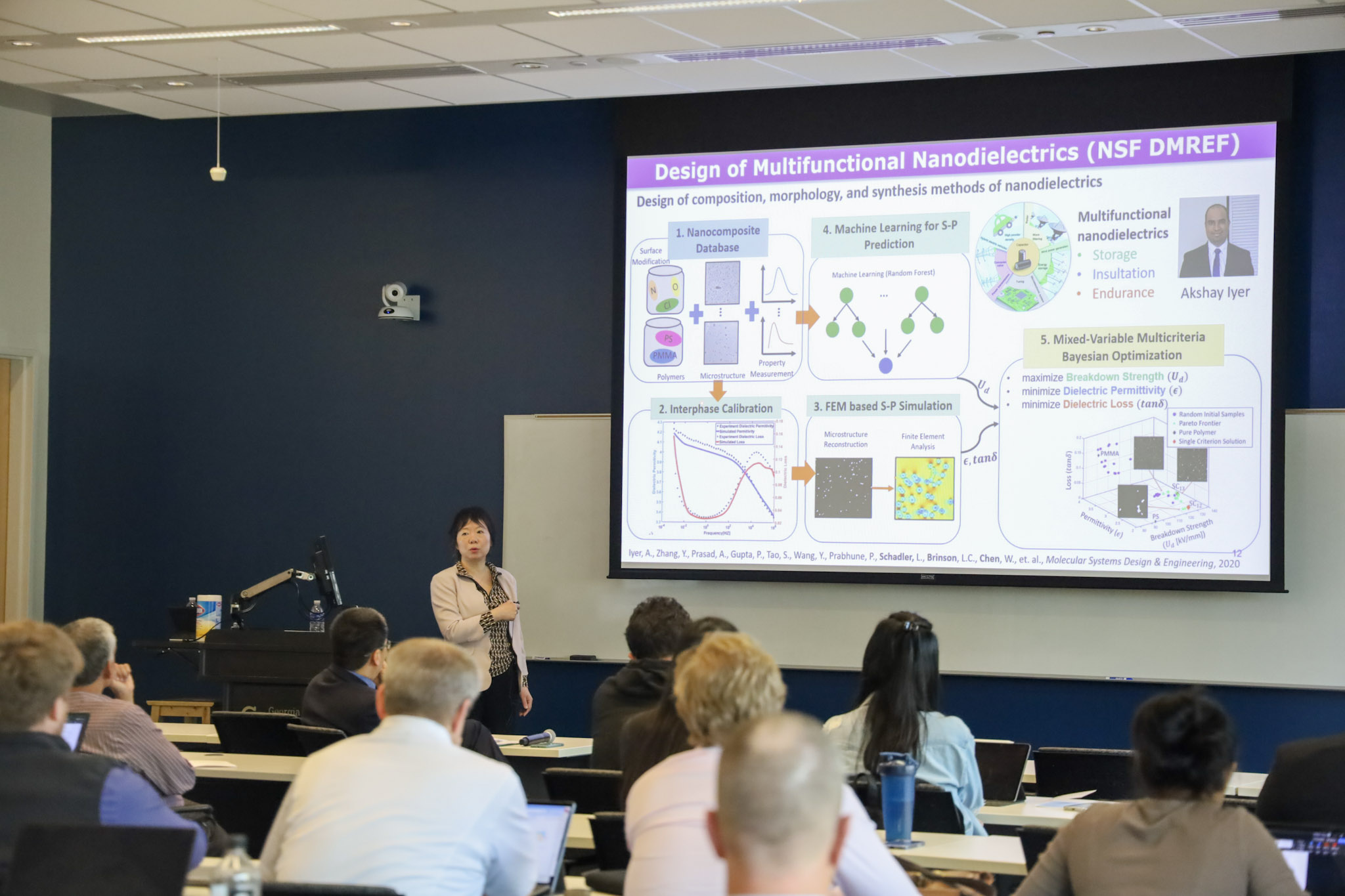As the global demand for innovative materials continues to soar, the work of Dr. Wei Chen, emphasizes a sophisticated and nuanced approach to the design and optimization of materials and structures.
Dr. Chen, the Wilson-Cook Professor in Engineering Design and Chair of Mechanical Engineering at Northwestern University, gave her recent lecture at the 2024 LeeAnn and Walter Muller Distinguished Scholarship Lecture Series on March 28.
Her discussion on the potential of Latent Variable Gaussian Process (LVGP) in shaping the future of materials, captured hidden influences that impact material and structural behavior; providing a more comprehensive understanding of complex systems.
What sets LVGP apart is its flexibility and adaptability- not only can the method be used to take both qualitative and quantitative variables as inputs, it can also be used to fuse multi-fidelity or multi-source data.
Chen's academic journey, spanning from Shanghai Jiatong University, to the Georgia Institute of Technology, underscores her expertise and dedication to the field.
Her work has been published in over 380 archival publications including 4 books and 12 book chapters.
Navigating Emerging Material Challenges
Amidst these impressive achievements lies a common thread -- a relentless pursuit of innovation and a commitment to pushing the boundaries.
By seamlessly integrating statistical inference, machine learning, and uncertainty with quantification techniques, Chen navigates the complexities of material design with precision and purpose.
Building on this foundation, the lecture delved deeper into the practical challenges encountered in the realm of material design.
“Specific challenges in making so many discrete decisions include mixed variable design decisions (quantitative and qualitative), multimodal/multi-source machine learning, and integrated on-line and off-line quality control (digital twin).”
Chen further explained how LVGP models are designed with interpretability in mind, ensuring that engineers and scientists can easily understand and explain the underlying mechanisms driving design decisions.
“The integration of models with varying levels of fidelity enables a balance between computational efficiency and accuracy, making LVGP particularly well-suited for designing next-generation materials and structures,” Chen shared.
Advancements in material design such as this statistical method, are poised to transform industries, fostering the development of more sustainable, and technologically advanced products and infrastructure.


